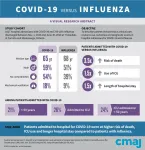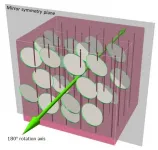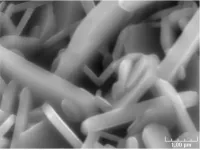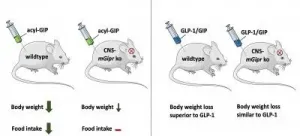Definitely not the flu: risk of death from COVID-19 3.5 times higher than from flu
2021-02-10
(Press-News.org) A new study published in CMAJ (Canadian Medical Association Journal) found that the risk of death from COVID-19 was 3.5 times higher than from influenza.
"We can now say definitively that COVID-19 is much more severe than seasonal influenza," says Dr. Amol Verma, St. Michael's Hospital, Unity Health Toronto, and the University of Toronto. "Patients admitted to hospital in Ontario with COVID-19 had a 3.5 times greater risk of death, 1.5 times greater use of the ICU, and 1.5 times longer hospital stays than patients admitted with influenza."
These findings are similar to study results recently reported in France and the United States.
The study compared hospitalizations for influenza between November 1, 2019, and June 30, 2020, in 7 large hospitals in Toronto and Mississauga -- areas with large populations and high levels of COVID-19. It included all patients admitted to medical services or the intensive care unit (ICU) for influenza or COVID-19. There were 783 hospitalizations for influenza in 763 unique patients compared with 1027 hospitalizations for COVID-19 in 972 unique patients (representing 23.5% of all hospitalizations for COVID-19 in Ontario during the study period).
Most patients hospitalized with COVID-19 had few other illnesses, and 21% were younger than 50 years of age. People younger than 50 also accounted for almost 1 in 4 (24%) admissions to the ICU.
"Many people believe that COVID-19 mainly affects older people," says Dr. Verma. "It is true that COVID-19 affects older adults most severely. We found that among adults over 75 years who were hospitalized with COVID-19, nearly 40% died in hospital. But it can also cause very serious illness in younger adults. Adults under 50 accounted for 20% of all COVID-19 hospitalizations in the first wave of the pandemic. Nearly 1 in 3 adults younger than 50 hospitalized with COVID-19 required intensive care, and nearly 1 in 10 required an unplanned readmission to hospital after discharge."
People hospitalized for COVID-19 had greater use of the ICU, were more likely to be put on a ventilator and had longer hospital stays than people with influenza.
"These differences may be magnified by low levels of immunity to the novel coronavirus compared with seasonal influenza, which results from past infections and vaccination," says Dr. Verma. "Hopefully, the severity of COVID-19 will decrease over time as people are vaccinated against the virus and more effective treatments are identified. There is, unfortunately, also the possibility that variants of the virus could be even more severe."
INFORMATION:
"Characteristics and outcomes of hospital admissions for COVID-19 and influenza in the Toronto area" is published February 10, 2021.
[Attachments] See images for this press release:

ELSE PRESS RELEASES FROM THIS DATE:
2021-02-10
Dramatic decreases in traffic caused by COVID-19 shutdowns improved air quality in car-dependent states but didn't offset additional forms of pollution in other parts of the country.
Those findings by a University of South Florida researcher suggest that while decreasing the number of vehicles on the road is a good first step toward creating cleaner air, additional measures aimed at reducing other sources of air pollution, such as coal plants or industrial factories, must also be considered.
The study, led by Yasin Elshorbany, an assistant professor of atmospheric chemistry and climate change at USF's St. Petersburg campus, was published ...
2021-02-10
CLEVELAND--A team of Case Western Reserve University researchers has found a way to measure key characteristics of proteins that bind to RNA in cells--a discovery that could improve our understanding of how gene function is disturbed in cancer, neurodegenerative disorders or infections.
RNA--short for ribonucleic acid--carries genetic instructions within the body. RNA-binding proteins play an important role in the regulation of gene expression. Scientists already knew that the way these proteins function depends on their "binding kinetics," a term that describes how frequently they latch on to a site in an RNA, and how long they ...
2021-02-10
A team of researchers, led by a Texas A&M University professor, has found that some energy drinks have adverse effects on the muscle cells of the heart.
The study, led by Dr. Ivan Rusyn, a professor in the Veterinary Integrative Biosciences (VIBS) Department at the Texas A&M College of Veterinary Medicine & Biomedical Sciences (CVMBS), was published in Food and Chemical Toxicology. In it, researchers observed cardiomyocytes - human heart cells grown in a laboratory - exposed to some energy drinks showed an increased beat rate and other factors affecting cardiac function.
When placed in the context of the human body, ...
2021-02-10
A team at the University of Colorado Boulder has designed new kinds of liquid crystals that mirror the complex structures of some solid crystals--a major step forward in building flowing materials that can match the colorful diversity of forms seen in minerals and gems, from lazulite to topaz.
The group's findings, published today in the journal Nature, may one day lead to new types of smart windows and television or computer displays that can bend and control light like never before.
The results come down to a property of solid crystals that will be familiar to many chemists and gemologists: Symmetry.
Ivan Smalyukh, ...
2021-02-10
Israelis across the political spectrum prefer the status quo to the two-state solution, and Palestinians are only willing to accept a two-state solution that Israelis will be unable to accept, according to a new RAND Corporation report that assesses whether there are any alternative solutions to the conflict that average Israelis and Palestinians would support.
Derived from a series of innovative, structured focus group discussions, the report suggests that the Biden Administration's recent reaffirmation of U.S. policy to support a "mutually agreed two-state solution, one in which Israel lives in peace ...
2021-02-10
The number of people who own electric vehicles (EVs) is increasing, but they face a conundrum: Unlike those who own gasoline-burning cars, EV owners can't just pop down to the corner gas station for a fill-up. Particularly in rural areas, charging stations can be few and far between.
Joshua Pearce, Richard Witte Endowed Professor of Materials Science and Engineering and professor of electrical and computer engineering at Michigan Technological University, hopes to change that.
In a model outlined in a paper in the journal Renewable Energy, Pearce and his co-author, graduate student Swaraj Sanjay Deshmukh, note the untapped potential of retail parking lot solar photovoltaic awnings.
The study investigates the energy-related benefits ...
2021-02-10
A team of researchers from Immanuel Kant Baltic Federal University obtained magnetic nanoparticles using sweet flag (Acorus calamus). Both the roots and the leaves of this plant have antioxidant, antimicrobial, and insecticide properties. The extract of sweet flag was used as a non-toxic reagent for the manufacture of coated particles. The authors of the work also showed the efficiency of the new nanoparticles against several types of pathogenic fungi that damage cultivated plants. A technology developed by the team provides for the manufacture of nanoparticles from a cheap plant-based raw material and reduces the harmful effect of reagents on the environment.
Because of their unique properties, nanoparticles are used in many areas, from medicine to oil production. ...
2021-02-10
The gram-negative bacteria Helicobacter pylori (H. pylori) colonize the stomachs of the majority of the world's population. Although most people may never experience major complications due to the pathogen, H. pylori infections increase the risk of certain types of gastric cancer, as well as other illnesses such as peptic ulcers and gastritis.
Currently, H. pylori infections are treatable with a cocktail of antibiotics, but the rapid emergence of antibiotic resistance in H. pylori is a significant concern. To counter these threats, Pushkar Lele, assistant professor in the Artie McFerrin Department of Chemical Engineering at Texas A&M University, investigated how ...
2021-02-10
The GIP receptor in the central nervous system plays a crucial role in the regulation of body weight and food intake. This is shown by a recent study by Helmholtz Zentrum München, ETH Zurich and the German Center for Diabetes Research (DZD). The study, which has now been published in 'Cell Metabolism', identifies new targets for the development of a drug treatment for obesity and type 2 diabetes.
Dual-agonists targeting the receptors for Glucagon-like peptide 1 (GLP-1) and glucose-dependent insulinotropic polypeptide (GIP) are promising novel drug candidates for the treatment of obesity and diabetes. The new study shows how GIP decreases body weight. GIP is a hormone produced by ...
2021-02-10
With the recent development of foldable mobile phone screens, research on foldable electronics has never been so intensive. One particularly useful application of the foldable technology is in solar panels.
Current solar cells are restricted to rigid, flat panels, which are difficult to store in large numbers and integrate into everyday appliances, including phones, windows, vehicles, or indoor devices. But, one problem prevents this formidable technology from breaking through: to be integrated into these items, solar cells need to be foldable, to bend at will repeatedly without breaking. Traditional conducting materials used in ...
LAST 30 PRESS RELEASES:
[Press-News.org] Definitely not the flu: risk of death from COVID-19 3.5 times higher than from flu





